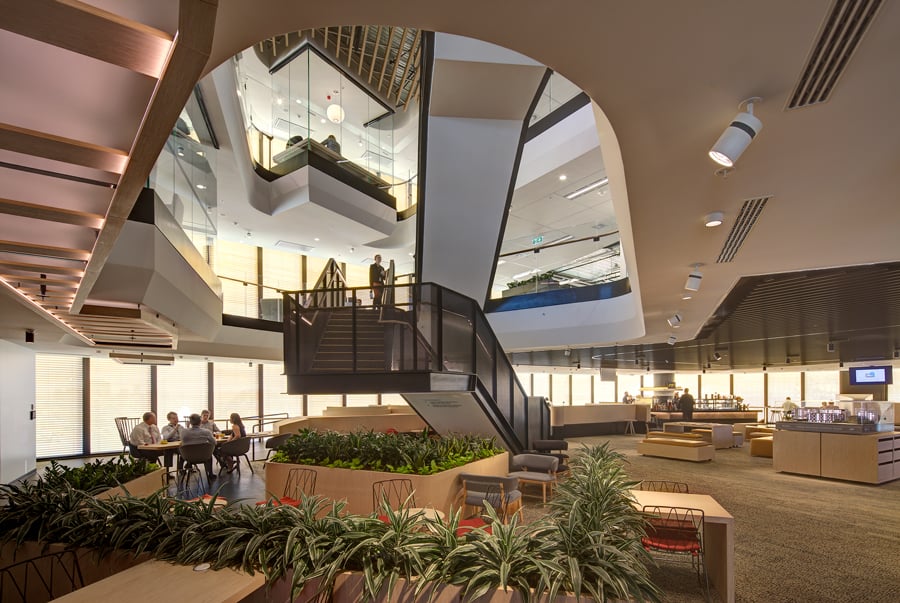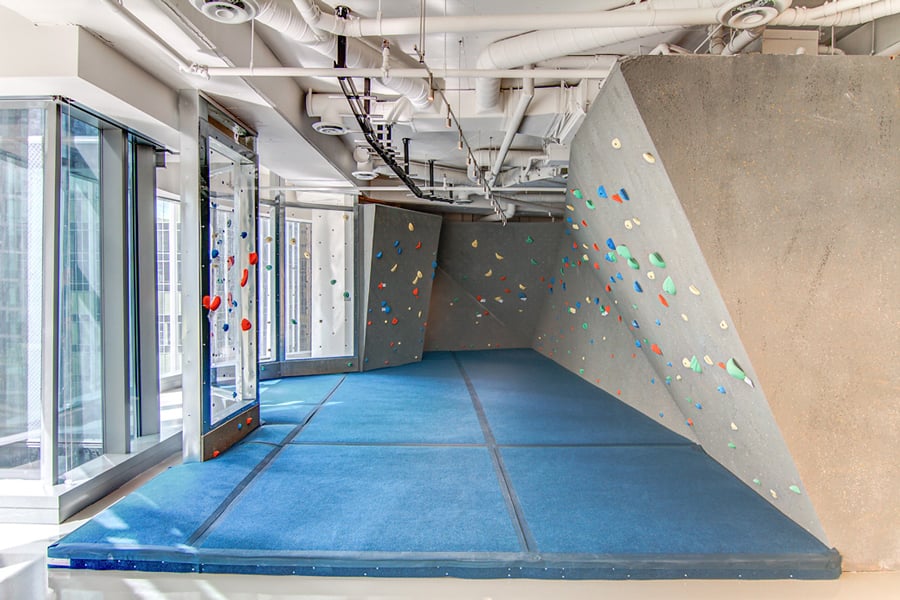
August 23, 2019
Redefining Fitness: How WELL v2 Is Driving More Inclusive Interiors
Rachel Gutter, CEO of the International WELL Building Institute, discusses WELL v2 and making the standard’s Movement category more universal.

Avinash Rajagopal: Can you talk about what’s new with WELL v2 [the 2018 update to the human health and well-being certification system], especially with regard to fitness and movement?
Rachel Gutter: Increasingly, we understand that our buildings can be vessels for public health outcomes. We wanted to make a number of fundamental changes from the first version of WELL that would make the system more equitable and more accessible as well as affordable, and that would address the fact that [best practices for] health are not one-size-fits-all.

Physical activity was a place where that came up a lot. In the lead-up to launching WELL v2, we held nine roundtables across the globe and what we heard were really different attitudes and approaches to physical activity. For example, the folks in Australia said, “We don’t need gyms. The weather here is always perfect. You guys use gyms; we go outside. Talking about subsidies for gym memberships doesn’t seem as relevant to us as sponsoring our intramural football team.” We tried to revisit the movement category within WELL [one of ten such concepts in the certification system] to address not just a diverse set of needs but also a different set of traditions and desires about how you get your physical activity.
AR: Sometimes people talk about fitness from an abled perspective, but as we know, workplaces have to be not only accommodating but nurturing and supportive of people of all abilities.

RG: We changed the concept name from Fitness to Movement to really stress that attitude of inclusivity. There’s a massive uptick in focus in WELL v2 on accessibility and universal design. We thought about various aspects of accessibility, going beyond the bathrooms and entryways to think about helping people navigate through spaces. Also, things like making sure that someone with disabilities could, for instance, open the windows—I believe that actually shows up in our light concept. These aspects of universal design and inclusive design are peppered in throughout the entire standard.
We also thought of the operators of the building, who often work in the worst conditions, sitting in the basement all day with the worst acoustics, with poor ergonomics and lighting. Like people with disabilities, they’re a good example of those who have been forgotten in the design of our spaces or whom we haven’t fully accounted for and considered.
We cared a lot in WELL v2 that we didn’t leave anyone out of the calculation. I think that the same could be said for those who have any kind of ability. We tried to think about how to make an environment inclusive and welcoming, but also how to encourage their movement throughout the day in a safe way.
AR: What is the relationship between corporate policy, organizational culture, and interior design when it comes to wellness?
RG: I was just with the chief mindfulness officer for a Fortune Ten company and he said: “Everybody keeps congratulating me on getting meditation rooms in all of our offices throughout the world. But those meditation rooms are almost always empty.” What we know intuitively is that without a culture of health and well-being in the workplace, many of the things that are called for in WELL features won’t ultimately be effective. The good news is that there are lots of things in WELL that nobody has to opt into. Nobody has to opt into better air quality, improved acoustics, better water. The most successful organizations that pursue WELL succeed because they utilize WELL as a framework for driving toward a culture of health and well-being, and prizing the employees’ health as an indicator of the business’s overall success.
You may also enjoy “Take a Tour of Mohawk Group’s Factory—and Its Sustainability-Minded Business Strategy.”
Would you like to comment on this article? Send your thoughts to: [email protected]





